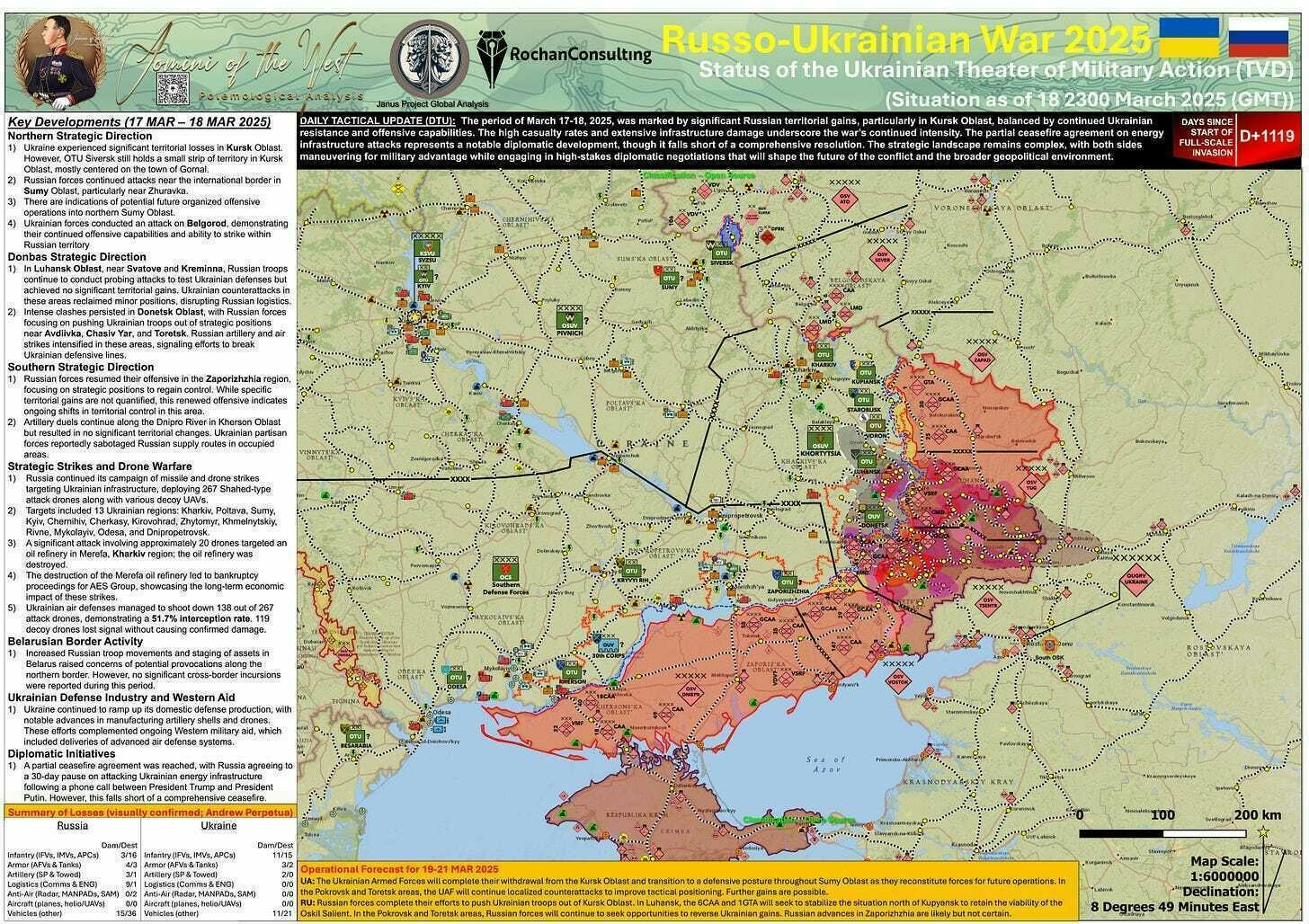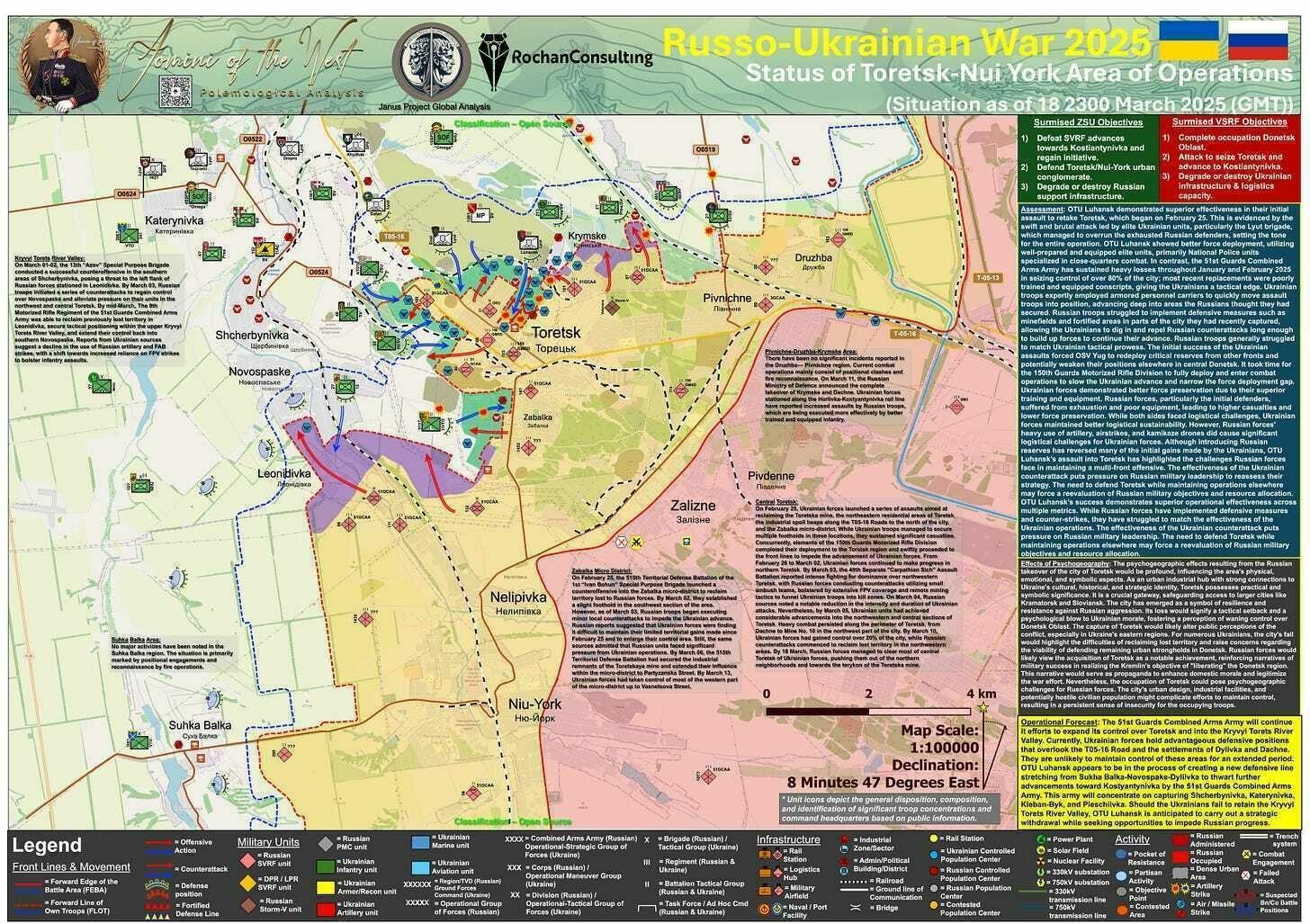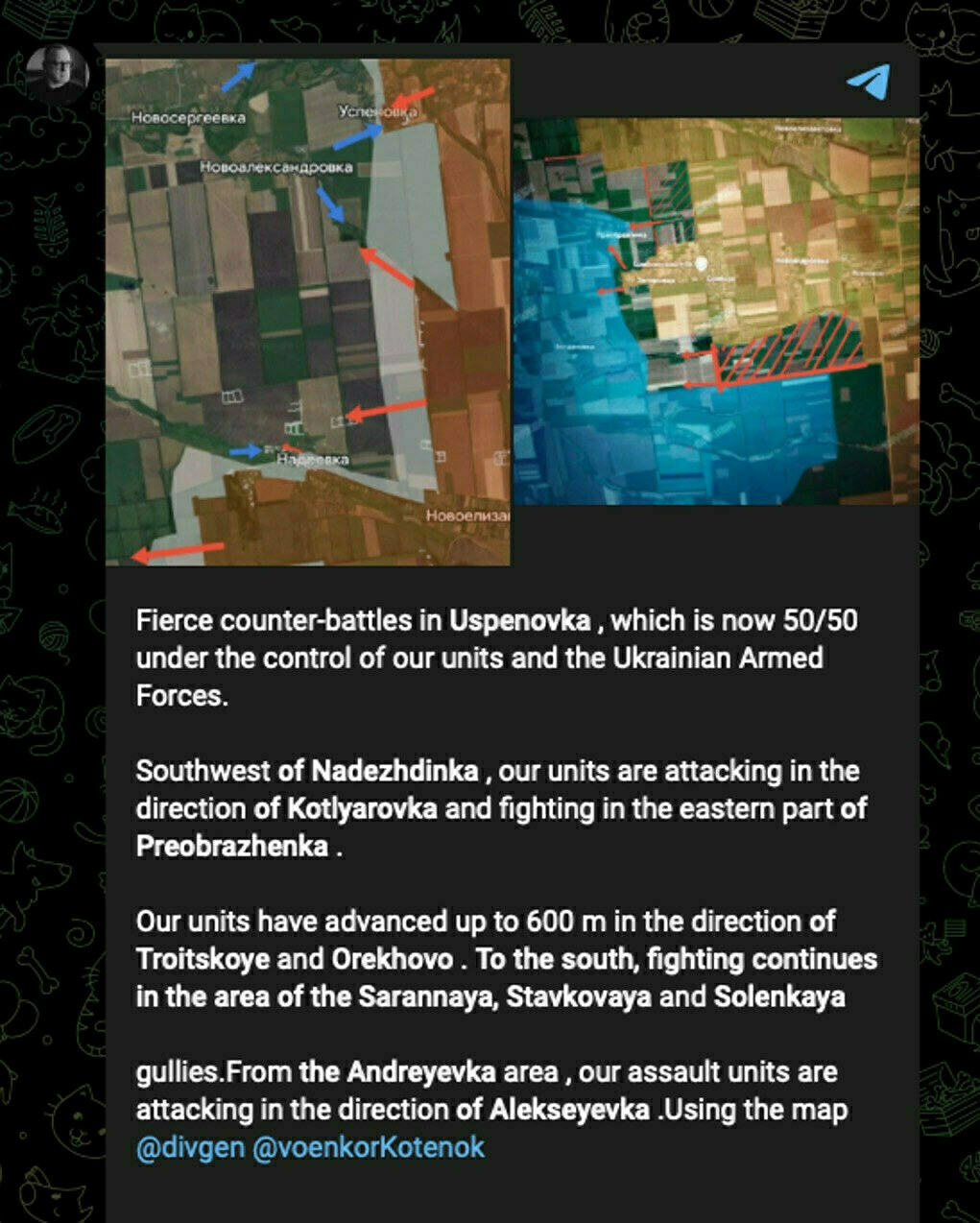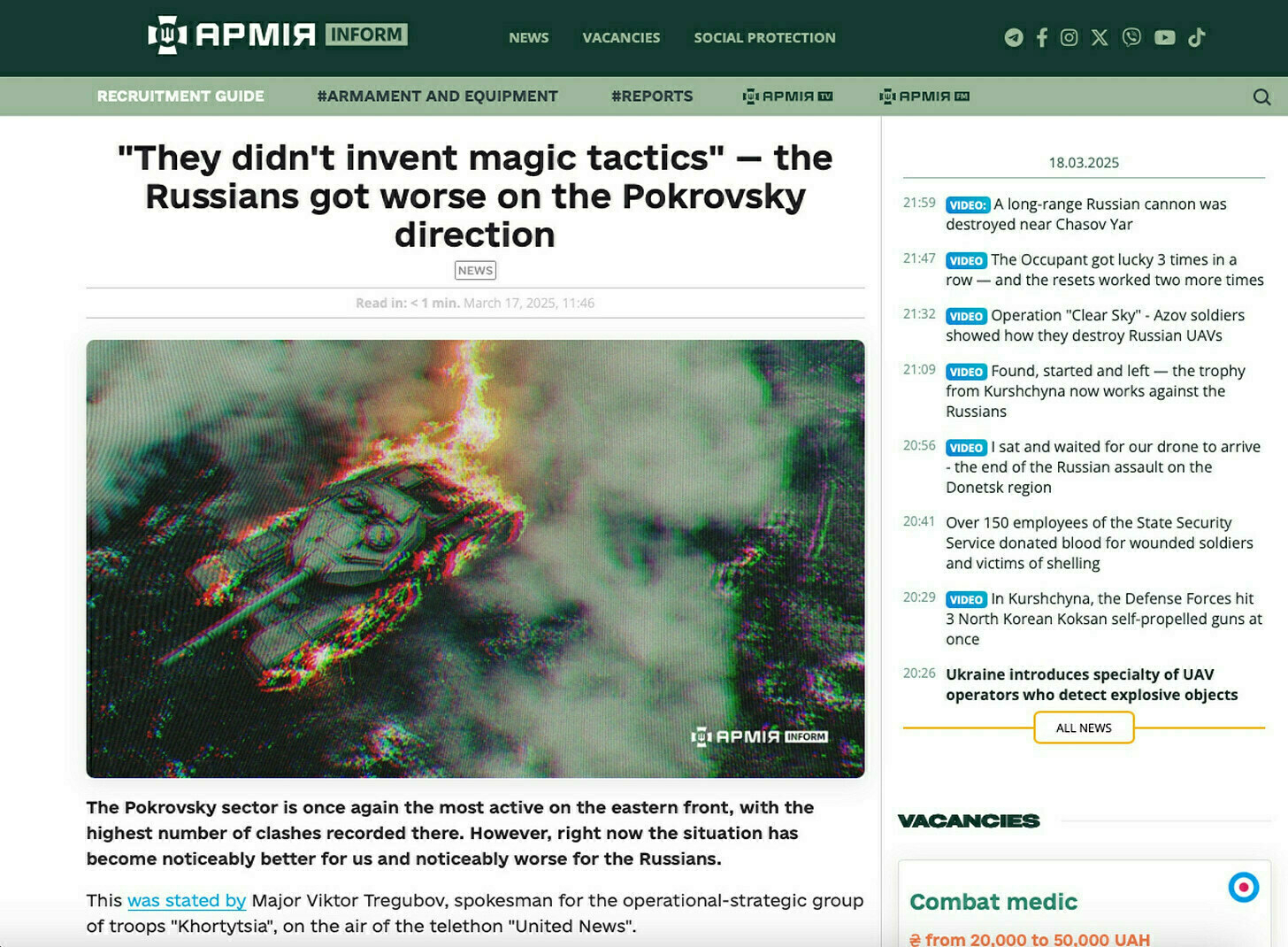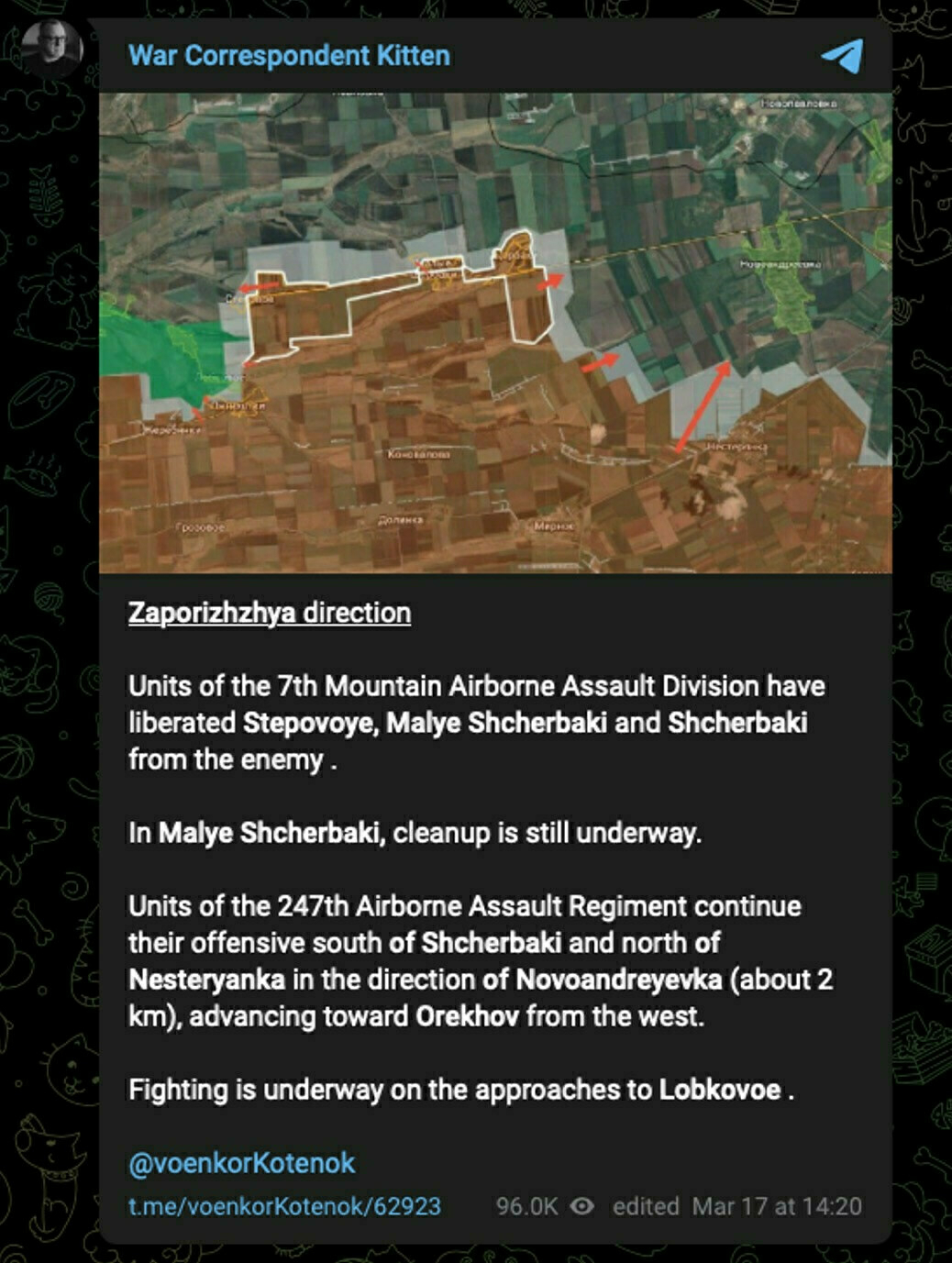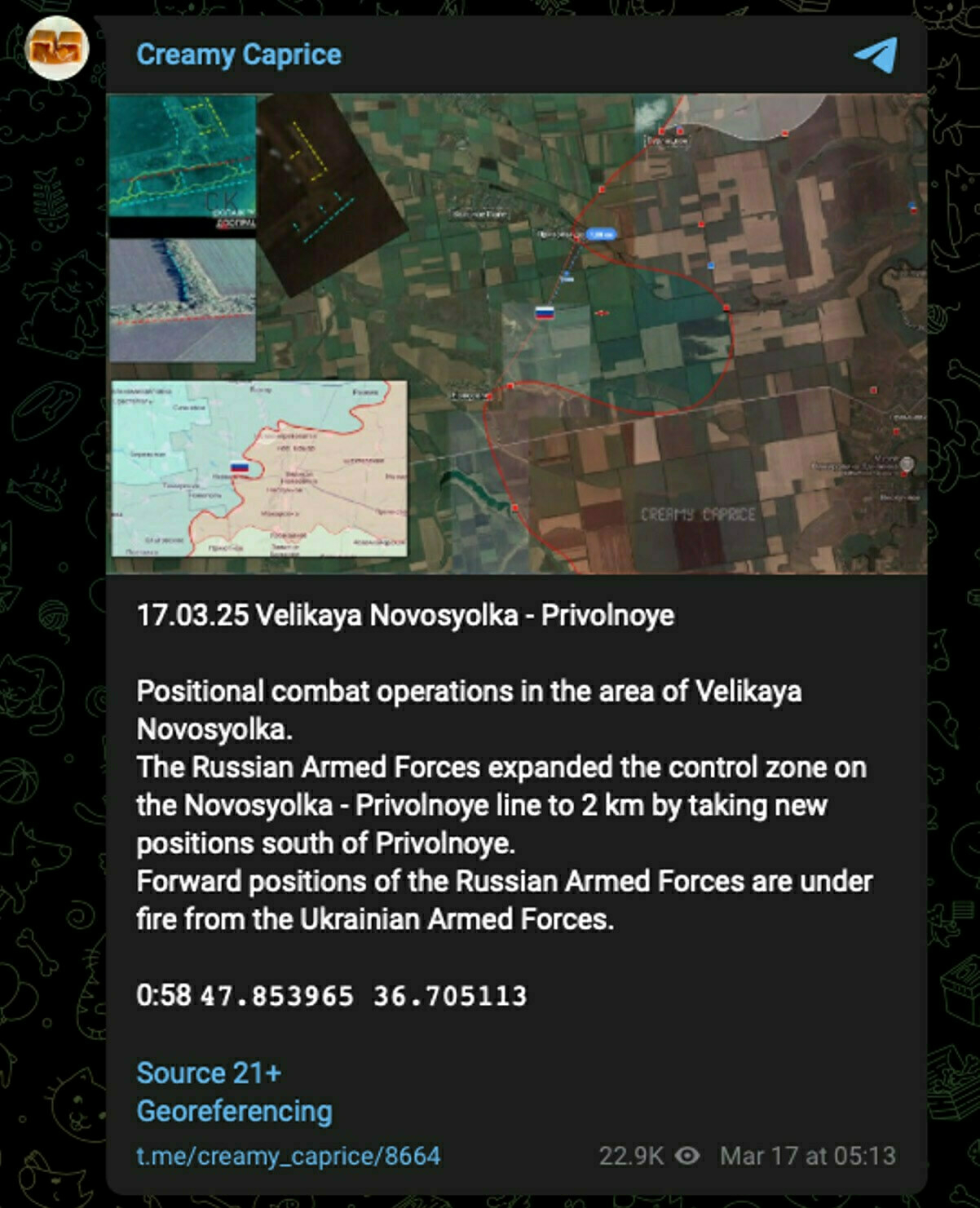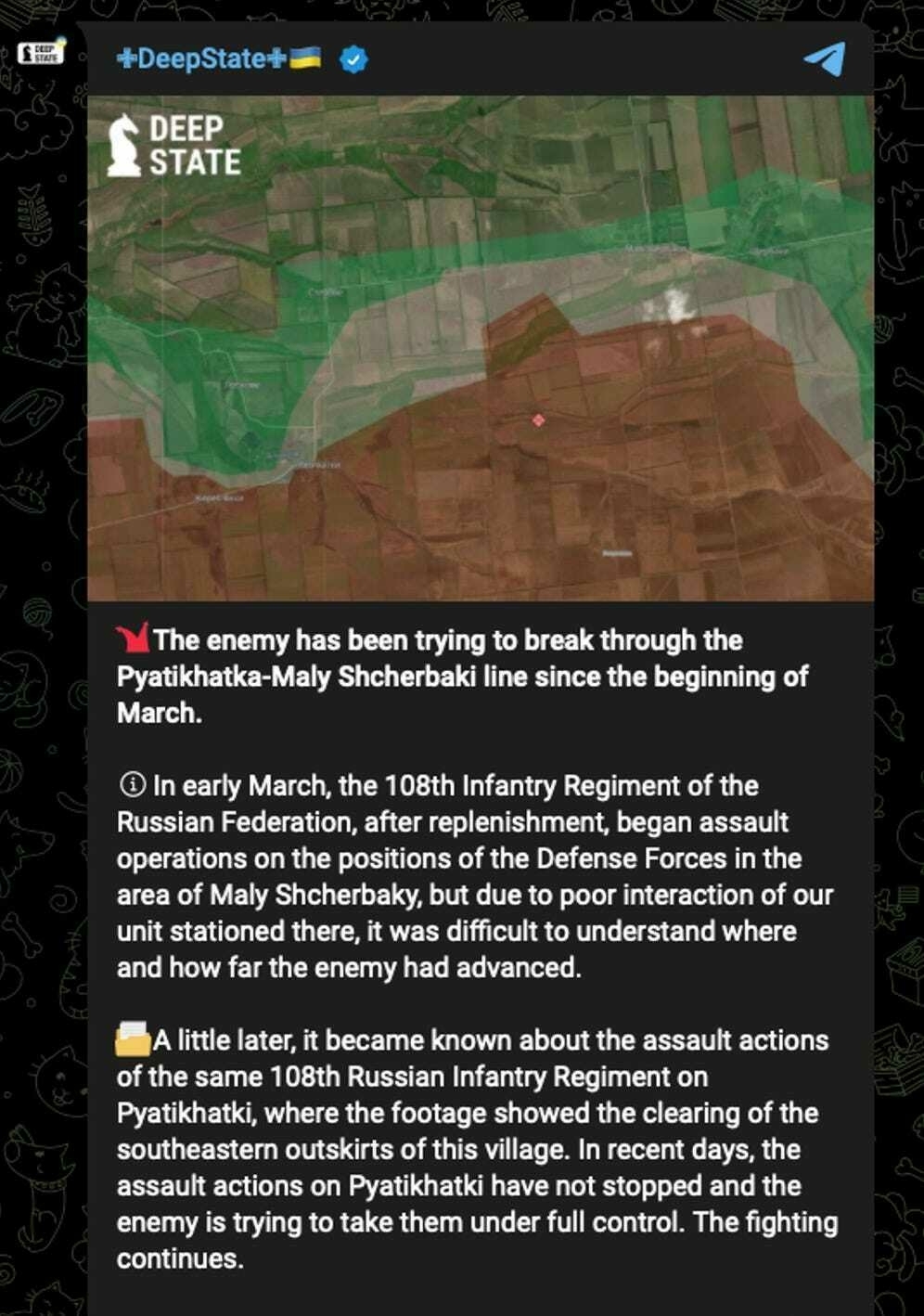Daily Tactical Update (DTU), Ukrainian TVD Day 1119: The period of March 17-18, 2025, was marked by significant Russian territorial gains, particularly in Kursk Oblast. These gains were balanced by continued Ukrainian resistance and offensive capabilities. The high casualty rates and extensive infrastructure damage underscored the war’s continued intensity.
If fully implemented, the partial ceasefire agreement on energy infrastructure attacks represents a notable diplomatic development, though it falls short of a comprehensive resolution. The strategic landscape remains complex, with both sides maneuvering for military advantage while engaging in high-stakes diplomatic negotiations that will shape the conflict's future and the broader geopolitical environment.
Thanks for reading Ukraine Conflict Monitor! Subscribe for free to receive new posts and support my work.
Report prepared by Jomini of the West.
Toretsk-Nui York Area of Operations: OTU Luhansk demonstrated superior effectiveness in its initial assault to retake Toretsk, which began on February 25. This is evidenced by the swift and brutal attack led by elite Ukrainian units, particularly the Lyut brigade, which overran the exhausted Russian defenders, setting the tone for the entire operation. While Russian forces have implemented defensive measures and counter-strikes, they have struggled to match the effectiveness of the Ukrainian operations. The effectiveness of the Ukrainian counterattack puts pressure on Russian military leadership. The need to defend Toretsk while maintaining operations elsewhere may force a reevaluation of Russian military objectives and resource allocation.
Luhansk Front: A Ukrainian soldier stated that the situation in the Lyman and Siversk directions has become more challenging. The Russians managed to capture the dominant heights in the Bilohorivka area, allowing them to conduct artillery attacks on Ukrainian units in the Serebryansky forest. From the Bilohorivka side, the Russians are also attempting to break through to Hryhorivka, but they have been unsuccessful so far. A soldier added that the Russians' plan is clear. It is possible they will soon focus their efforts on the Lyman direction (Yampolivka - Torske), with total artillery control from Bilohorivka and Kreminna, aiming to push Ukrainian troops out of the Serebryansky forest beyond the Siversky Donets River, which in turn will pose a threat to Siversk.
Donetsk Front: A Russian source asserted that on Monday, 17 MAR, meeting engagements took place in Uspenivka, which was evenly controlled by Russian and Ukrainian units. Southwest of Nadiivka, Russian forces launched an attack toward Kotlyarivka and engaged in fighting in the eastern part of Preobrazhenka. Major Viktor Trehubov reported on Monday (17 MAR) that the Pokrovsk axis is once again the most active on the Donbas front, with the highest number of combat engagements recorded there. Trehubov stated that recent developments have shown that Russian reserves are not unlimited since they are increasingly attacking with less heavy equipment.
Southern Strategic Direction: On Monday, March 17, geolocated footage indicated that Russian forces were expanding their zone of control along the Novosilka-Pryvilne line to 2 km and establishing new positions south of Pryvilne. In the Orikhiv axis, a Russian source reported that units from the 7th Mountain Airborne Assault Division had fully captured Stepove, Mali Shcherbaky, and Shcherbaky. Deep State asserted on Tuesday, March 18, that the Russians have been trying to break through the Pyatykhatky-Mali Shcherbaky line since the beginning of the month. In early March, the 108th Guards Air Assault Regiment (Kuban Cossack), after receiving reinforcements, began assaulting the ZSU's positions near Mali Shcherbaky. However, due to poor coordination among Ukrainian units in the area, it was difficult to determine where and how far the Russians had advanced. Recently, the Russians have been attacking Pyatykhatky, making a concerted effort to capture the village completely. Russian fighters were also observed in Stepove, attempting to secure a foothold along the road. So far, Ukrainian forces have managed to hold back the Russian offensive with artillery and other fire support, but the situation is becoming increasingly challenging.
Black Sea Theater of Military Action (OTMO): Captain 3rd Rank Dmytro Pletenchuk, spokesperson for the Ukrainian Navy, reported that Russian ships have been absent from the Black Sea for five days, while their absence in the Sea of Azov extends to months. Pletenchuk attributed the lack of the Russian fleet to the ‘influence’ of the Ukrainian Neptune cruise missile. The latest version of the missile can strike targets up to 1,000 kilometers away. He also noted that while it was originally designed as an anti-ship missile, it now functions in a mode that allows it to engage ground targets.
Trump-Putin Ceasefire Negotiations: Presidents Trump and Putin held an hour-and-a-half-long conversation today in which Putin agreed to a partial 30-day ceasefire. This still falls short of the quick ceasefire Trump wants, and the long term-settlement Putin desires to impose on Ukraine. The ceasefire favors Russia more than Ukraine. In the coming days and weeks, we will see how much weight this proposal actually holds in its implementation and its ability to lead to more substantive negotiations.
Operational Outlook: The Ukrainian Armed Forces will complete their withdrawal from the Kursk Oblast and transition to a defensive posture throughout Sumy Oblast as they reconstitute forces for future operations. In the Pokrovsk and Toretsk areas, the UAF will continue localized counterattacks to improve tactical positioning. Further gains are possible. Russian forces may complete their efforts to push Ukrainian troops out of Kursk Oblast. In Luhansk, the 6CAA and 1GTA will seek to stabilize the situation north of Kupyansk to retain the viability of the Oskil Salient. In the Pokrovsk and Toretsk areas, Russian forces will continue to seek opportunities to reverse Ukrainian gains. Russian advances in Zaporizhzhia are likely but not certain.
This open-source operational summary of the Ukrainian TVD is based on information from ZSU and VSRF daily operational briefs, various Ukrainian and Russian Telegram Channels, Western intelligence agencies' public statements, military analysts, and my professional experience. Any errors in the information and translation presented here are my own and will be corrected in the following update.
Thanks for reading Ukraine Conflict Monitor! Subscribe for free to receive new posts and support my work.
